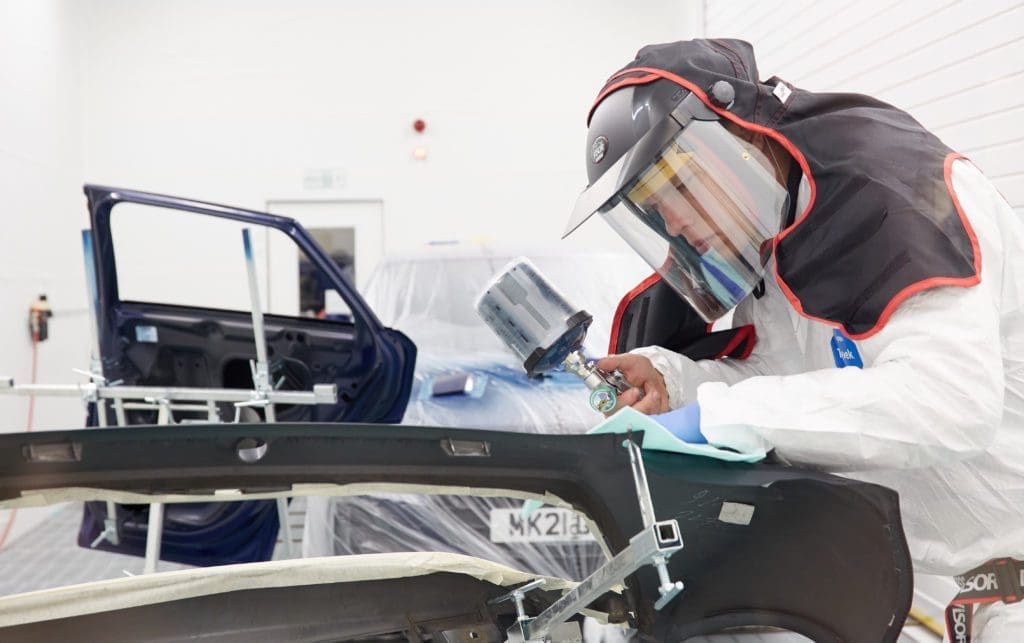The motor repair industry is seeing a ‘green parts revolution’, as insurers, fleets, and repairers harness the benefits of second-hand supply chains. Here we discuss the perks of using green parts for both personal and commercial vehicle repair.
What are ‘green parts’?
‘Green parts’ are second-hand OEM (original equipment manufacturer) parts which have been reclaimed from vehicles at the end of their useful lives.
Many vehicles that are deemed a ‘total loss’ by insurance companies will actually have many undamaged parts and components, which can be safely salvaged and reused by repairers.
These second-hand parts can be used in place of new OEM or aftermarket components, providing the same repair quality for a smaller price tag. They’re most commonly used to replace cosmetic parts, such as bumpers, wing mirrors, or headlights.
Are they safe to use?
Green parts go through comprehensive checks to ensure they’re safe to use in repairs, including making sure they fall in line with Thatcham guidance.
They also come with similar warranties to brand-new OEM parts, meaning they offer the same quality/safety standards as their off-the-shelf counterparts.
The benefits of using green parts in vehicle repair

Embracing green and second-hand parts can bring a number of benefits to your vehicle repair strategy, including:
#1 – Same quality for a cheaper price
Green parts will only be used if they’re in a good, safe condition. This means they’re often the same quality as brand-new OEM parts – and come at a cheaper price!
This can help to reduce the overall cost of vehicle repairs, without compromising on the quality or safety of the work completed.
#2 – They’re sustainable, and reduce your carbon footprint
Manufacturing new parts produces a lot of carbon – from the energy required to make them, to the fuel used to transport them worldwide.
Green parts, on the other hand, are an approved sustainable resource, making them effective in reducing the carbon footprint of individual repairs.
This is particularly useful for companies conducting repairs on fleet vehicles – helping them to remain in-line with their corporate sustainability pledges.
#3 – They’re widely available, and quick to get hold of
The global parts supply chain is currently facing severe delays in the production and distribution of new vehicle parts. This means it can often take longer for repairers to access replacement components from manufacturers or suppliers, causing delays for their customers.
Using green parts helps to overcome these delays, as you won’t be relying on new part production – used parts are much more widely available!
Using green parts in your fleet repair strategy
For fleets, utilising green parts helps to increase both the speed and cost-efficiency of vehicle repairs – getting vehicles back on the road more quickly after an incident.
Many companies have begun embracing green parts within their fleet repair strategy, and even recycling their own parts between vehicles – reducing costs even further.
Building your own internal green parts supply chain
Companies often use many of the same, or similar vehicles within their fleets. This enables them to recycle parts made available within their own vehicle stock, such as when vehicles are retired, or damaged beyond repair.
Fleets can store high-demand parts from dismantled vehicles, and use these as/when needed for internal repairs. This reduces expenditure on replacement parts, and reduces supply waiting times – further speeding up the repair process.
Green parts in personal insurance claims
In personal insurance claims, there’s often some controversy surrounding the use of green parts to repair first and third-party vehicles. However, much of this is down to perception, rather than the safety or validity of the parts themselves.
Educating customers on the validity of green parts
Many insurance customers are concerned about the safety, or often the quality of second-hand parts. This can be mitigated by educating customers on their validity, and the benefits of using them – such as quicker repair turnaround, and reduced claims costs.
Because green parts are checked in line with Thatcham guidance, they’re ensured to be just as safe as off-the-shelf components. This means there’s actually very little difference between new and green OEM parts, besides customers’ perception.
In Summary:
Green parts are second-hand OEM vehicle parts which have been reclaimed from vehicles at the end of their useful lives.
They’re often Thatcham approved, meaning they meet the same safety and quality standards as their brand-new counterparts.
These parts can be utilised by repairers as a safe, cost-effective alternative to off-the-shelf components.
Their benefits include reduced costs, a decreased repair carbon footprint, and often quicker repair turnaround.
Companies are already harnessing green parts within their commercial fleet repair strategy, which has proved effective in reducing costs, and increasing parts availability.
Personal insurers often approached green parts with trepidation, due to customer perceptions of their safety/quality standards. However, this perception is bound to change as customers are educated on the cost and efficiency benefits that come from harnessing green supply chains.




